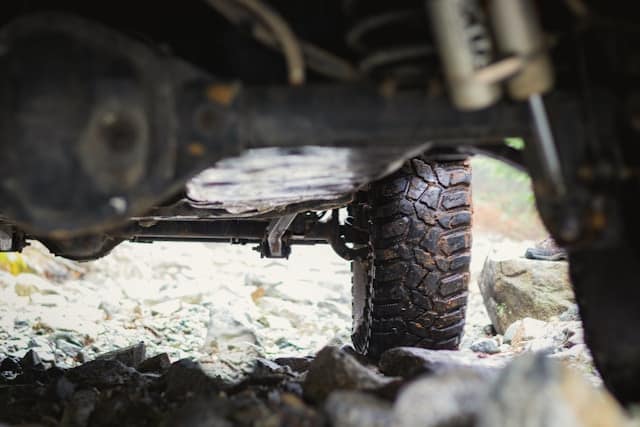What’s the Best Way to Calibrate Your Car’s Suspension Geometry for Improved Tire Wear and Grip?

When it comes to maintaining your car’s performance, suspension geometry is an often overlooked yet crucial aspect. This makes an enormous difference not only in how your car handles on the road but also in the longevity of your tires. Calibrating your car’s suspension geometry can help you optimize tire wear and grip, improving your overall driving experience and potentially saving you money in the long term. In this comprehensive guide, we’ll delve into the intricacies of suspension geometry and discuss the best ways to calibrate it for improved tire wear and grip.
The Importance of Suspension Geometry
Before we dive into the calibration process, it’s crucial to understand the importance of suspension geometry in a car’s performance.
Sujet a lire : Can You Significantly Improve Your Car’s Braking Distance with Upgraded Brake Lines and Fluid?
Suspension geometry refers to the layout and arrangement of the suspension components that connect the vehicle to its wheels. This system is responsible for absorbing shocks from the road and providing stability during turns and accelerations. It plays a vital role in ensuring a comfortable and safe ride.
One of the biggest impacts suspension geometry has on a vehicle is on its tires. The geometry can influence how evenly the tires wear down, how much grip they provide, and their overall lifespan. Incorrect alignment can lead to uneven tire wear, decreased fuel efficiency, and a lack of stability or control when driving.
A lire également : How to Safely Enhance Your Car’s Electrical System for High-End Audio Installations?
Understanding Camber, Caster, and Toe
When talking about suspension geometry, three primary angles come to the forefront: camber, caster, and toe. Understanding these angles is key to successfully calibrating your car’s suspension geometry.
Camber is the angle of the wheel in relation to the vertical axis when viewed from the front of the car. Negative camber (wheels tilted inward at the top) can increase grip during hard cornering, but can also lead to rapid tire wear if not properly managed. Positive camber (wheels tilted outward at the top), on the other hand, can improve stability but reduce cornering performance.
Caster is the angle of the steering pivot when viewed from the side of the vehicle. A positive caster will make the vehicle more stable at high speeds and during cornering, while a negative caster can make the vehicle feel more responsive.
Toe refers to the angle that the wheels make with the longitudinal axis of the vehicle when viewed from above. A toe-in (front of the wheels pointing towards each other) can increase stability, while a toe-out (front of the wheels pointing away from each other) can improve cornering.
How to Calibrate Your Car’s Suspension Geometry
Now that you have a basic understanding of the key elements of suspension geometry, let’s explore how to calibrate them for improved tire wear and grip.
Before beginning, make sure you have a good understanding of your vehicle’s specifications. Each car has a specific set of recommended alignments, which can usually be found in the owner’s manual or through a quick online search.
Firstly, for camber, the ideal setting will depend on how you use your vehicle. If you frequently take tight corners or drive at high speeds, a slight negative camber can improve grip. However, for everyday driving, a neutral camber is typically best to promote even tire wear.
The caster should generally be set to a slight positive angle. This will enhance straight-line stability and improve corner handling. However, keep in mind that too much positive caster might make your steering feel heavy.
Finally, the toe setting will depend on your preference between stability (toe-in) and cornering performance (toe-out). For daily driving, a slight toe-in is usually recommended.
Professional Assistance and Advanced Techniques
While calibrating your car’s suspension geometry can be a DIY project for some, it’s often best left to professionals, especially for those who are not well-versed in car mechanics.
Professional mechanics have the right tools and knowledge to accurately measure and adjust your wheels’ angles. They can also provide advice on the best settings for your specific driving habits and conditions.
For those interested in more advanced techniques, consider investing in adjustable suspension components. These allow for finer adjustments and can be tailored to suit specific driving scenarios. For instance, some high-performance vehicles utilize adjustable suspension systems that can be tweaked depending on whether the car is being driven on the city streets, on the highway, or on a racetrack.
Remember, your car’s suspension geometry is fundamental to its performance and safety. Regular checks and calibrations are necessary to maintain optimal tire wear and grip. So, whether you tackle it yourself or enlist professional help, make sure to give your car’s suspension geometry the attention it deserves.
Impact of Road and Weather Conditions on Suspension Geometry
It is crucial to also consider the impact of various road and weather conditions on your car’s suspension geometry.
The type of roads you frequently drive on can significantly influence the optimal suspension geometry settings for your vehicle. If you typically drive on uneven or off-road terrains, a suspension geometry that provides a higher ground clearance and more cushioning is likely to be beneficial. This configuration can protect the undercarriage of your vehicle and improve comfort by better absorbing bumps and shocks.
Conversely, if your driving primarily involves smooth, paved roads or racetracks, a lower, stiffer suspension setting may be more suitable. This configuration can enhance the car’s handling and performance, while also improving fuel efficiency by reducing aerodynamic drag.
Apart from road conditions, weather conditions can also affect suspension geometry. For instance, wet or icy conditions might necessitate certain modifications to improve grip and stability. A common strategy is to slightly increase the negative camber and toe-in, which can increase the tire contact area and thus improve traction.
But remember, any changes you make should still fall within the manufacturer’s recommended specifications to prevent unnecessary damage or accelerated wear to your vehicle.
Conclusion: Regular Checks and Adjustments
To wrap up, it can’t be stressed enough how vital maintaining the correct suspension geometry is for your vehicle.
It not only influences the handling characteristics and performance of your car but also has a direct impact on tire wear rates and overall tire lifespan. By ensuring that your vehicle’s camber, caster, and toe settings are properly calibrated, you can optimize tire grip and wear, potentially saving you money on tire replacements in the long run.
Furthermore, understanding the impact of road and weather conditions on suspension geometry can help you make necessary adjustments to ensure optimal performance under varying circumstances.
Whether you choose to handle the calibration process yourself or enlist the help of a professional mechanic, regular checks and adjustments of your suspension geometry should be an integral part of your vehicle maintenance routine. By doing so, you can enhance your driving experience, improve the longevity of your tires, and ultimately ensure a safer, more efficient ride. So, remember to give your car’s suspension geometry the attention it warrants.
